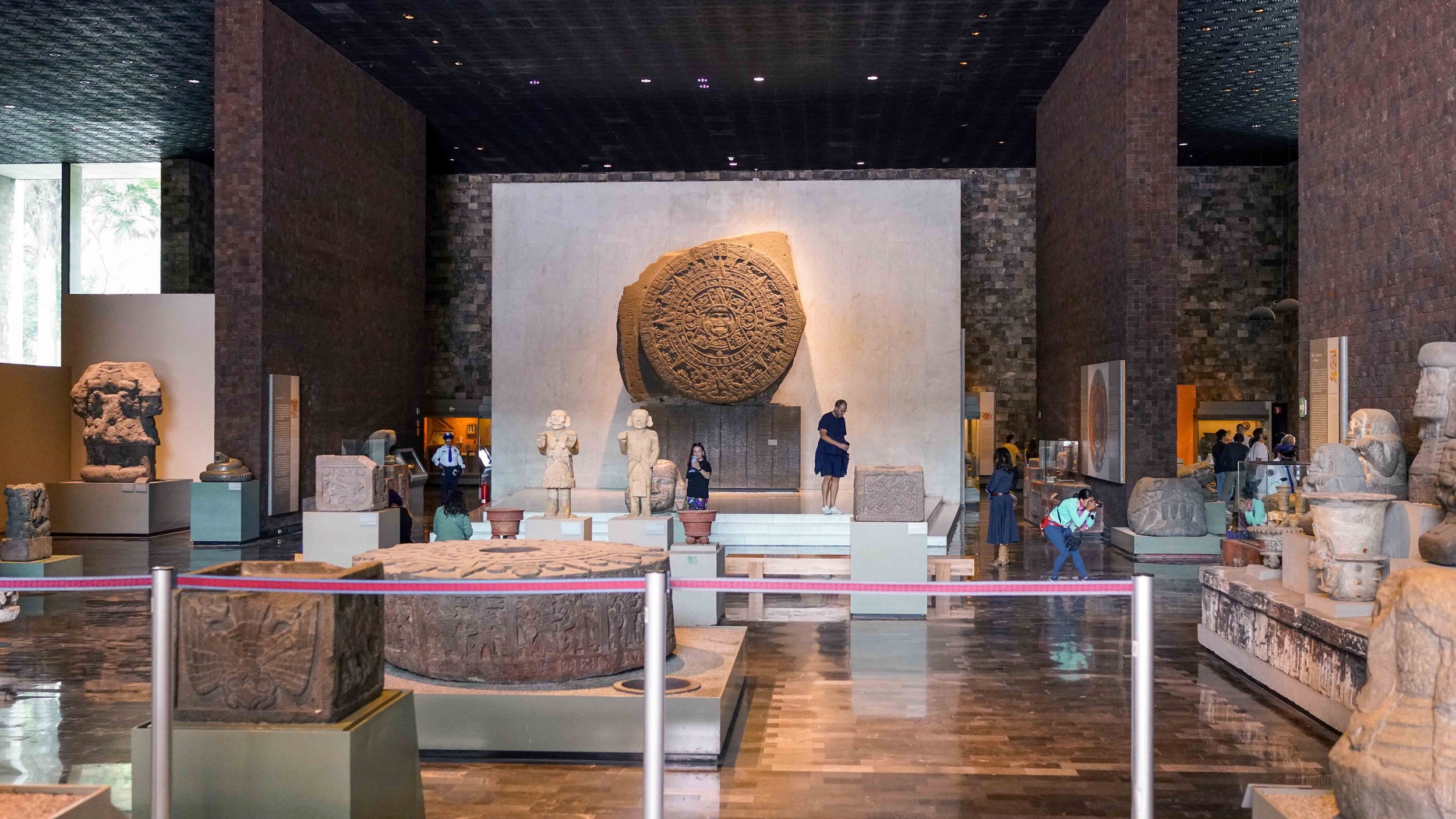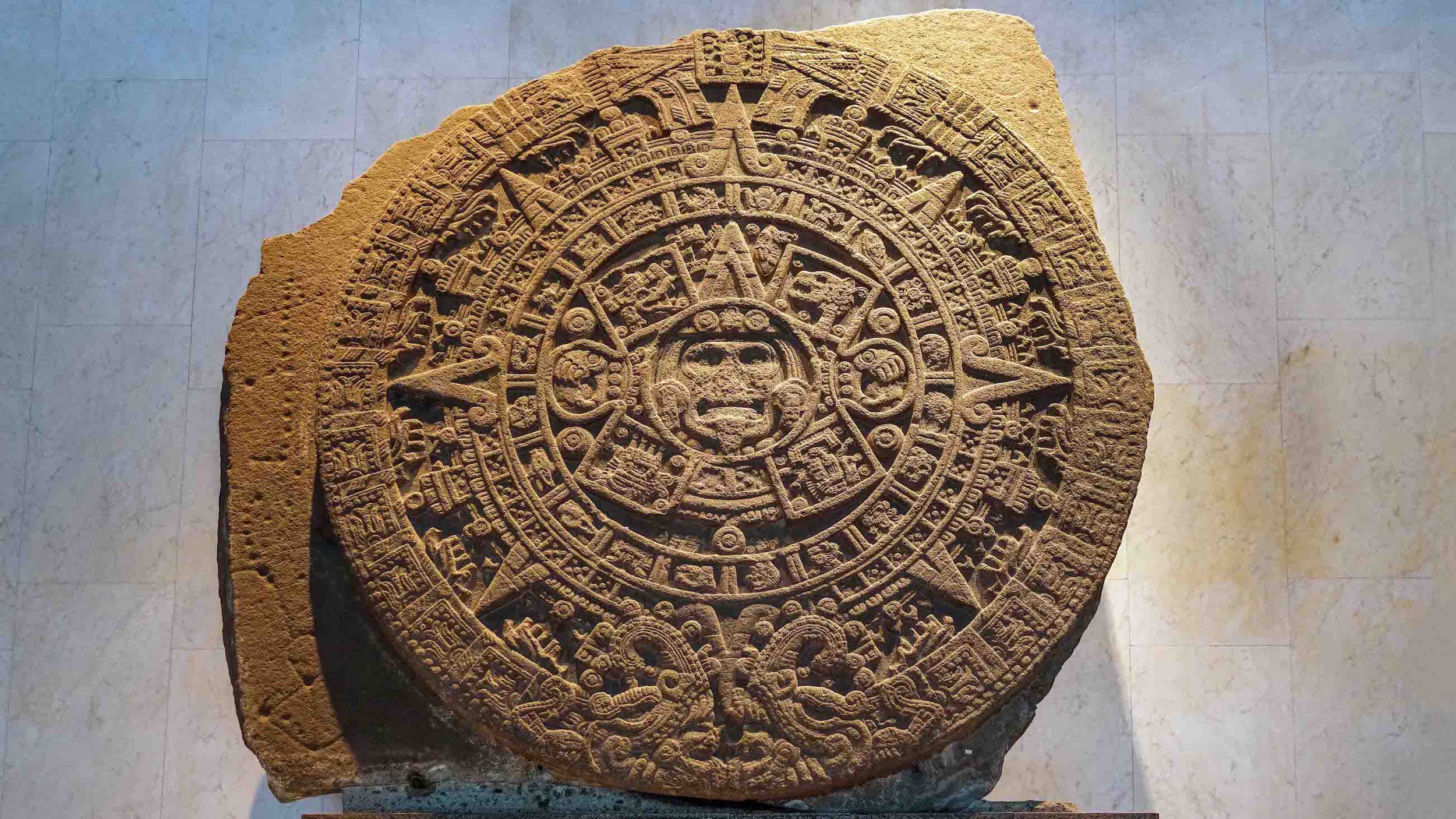The most famous Aztec artwork: The Sun Stone or “Calendar Stone”
Aztec Hall, National Museum of Anthropology (Museo Nacional de Antropología), Mexico City
(Photo: Lauren Kilroy-Ewbank, CC BY-NC-ND 2.0)
If you ever have a chance to step into the Hall of the Aztecs at Mexico City's National Museum of Anthropology, then prepare to be amazed by the Aztec Sun Stone (also called the “Calendar Stone” or “Piedra del Sol” in Spanish). The Sun Stone was originally sculpted in the Aztec capital of Tenochtitlan and was rediscovered in 1790 at the edge of the Zócalo (or Plaza Mayor) in Mexico City. This massive rock reveals the Aztecs' understanding of the universe or their cosmic beliefs.
Mexica artists (Aztec artists), Sun Stone (also called the "Calendar Stone"), c. 1502–20, stone (basalt), found on the edge of the Plaza Mayor (or Zócalo) in Mexico City. National Museum of Anthropology (Museo Nacional de Antropología)
(Photo: Lauren Kilroy-Ewbank, CC BY-NC-ND 2.0)
We have a great introductory video that explains some of the main symbolism of the stone, including the stories of the five different times or Suns, the epic battles fought by the sun god, Tonatiuh, and the symbols of animals and other elements that are calendrical glyphs on this incredible stone. Did you know we are living in the fifth sun, called Nahui Ollin? The Sun Stone offers a fascinating glimpse into Aztec civilization and culture. It’s not hard to see why it’s one of the most famous artworks in Mesoamerican history!
Plus, the National Museum of Anthropology (Museo Nacional de Antropología) is one of the best museums in Mexico (OK, one of the best museums in the world!). Anyone traveling to Mexico City is almost certain to visit the Great Hall of the Aztecs, where the Calendar Round looms over everything else!
Learn more about the Aztec Sun Stone and how it relates to Aztec cosmology in our video!
The Aztec Calendar Stone: Uncover the stories of the five different times or Suns, the epic battles fought by the sun god, Tonatiuh, and the symbols of animals and other elements that are calendrical glyphs on this incredible stone. Did you know we are living in the fifth sun, called Nahui Ollin? The Sun Stone offers a fascinating glimpse into Aztec civilization and culture. It’s not hard to see why it’s one of the most famous artworks in Mesoamerican history!
Here is what the video covers:
0:00 Introduction to the National Museum of Anthropology and the Hall of the Aztecs
0:20 Introduction to the Sun Stone or Calendar Stone
0:44 Where was the Sun Stone placed?
0:58 Who were the Aztecs or Mexica?
1:10 The weight, material, and colors of the Sun Stone
1:31 The face at the center, maybe the Sun God, Tonatiuh
2:27 A cosmic story about the universe’s birth and rebirth



